Björn Charpentier on shooting the horror film Blood
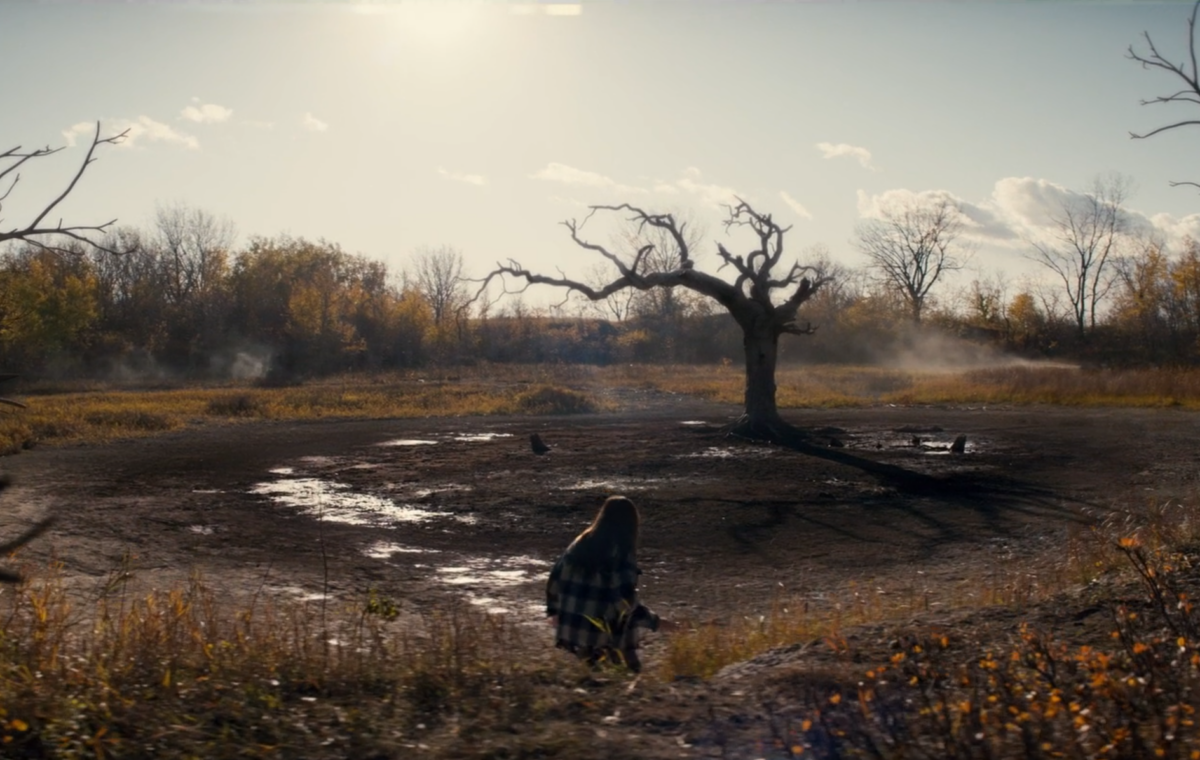
Single mother Jess, a nurse and recovering addict, moves into a farmhouse with her son Owen and daughter Skylar. Not long after settling in their new home, Owen is bitten by the family dog, leading to a mysterious infection with deadly consequences. Excellently shot by DP Björn Charpentier, Blood marks Charpentier’s third feature collaboration with director Brad Anderson.
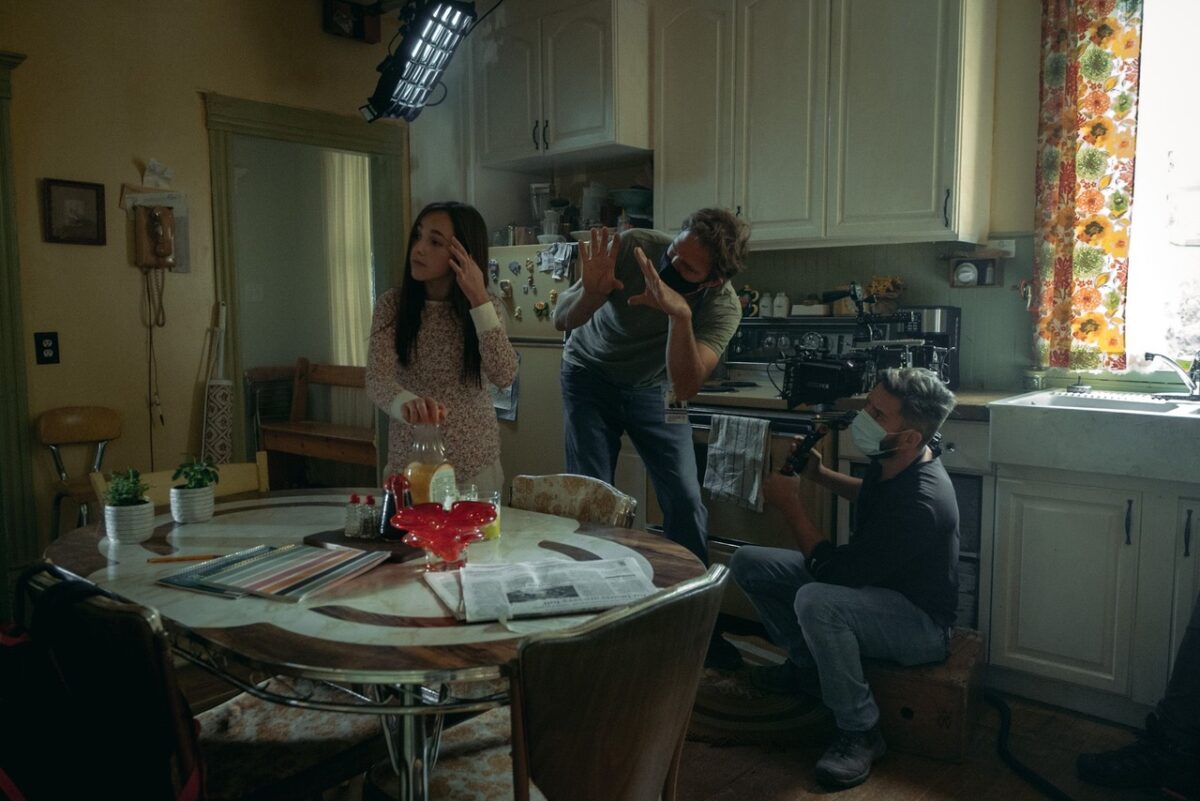
How did you first get involved with Blood?
This is my third collaboration with Brad Anderson. I did Beirut and Fractured with him as well. When we shot Blood, we shot in the same city we shot Fractured in and so we used the same crew. I don’t really like horror movies and when I read the script, I thought it was going to give me nightmares for weeks. I was watching some horror movies, just to try and get the visual language of them. I watched The Conjuring (Wan, 2013), but I turned it off because it was too scary for me!
I didn’t actually see Blood as a horror story, I saw it as a love story. A love story from a mother towards her child, doing everything she can for her son to survive. When we shot it, it felt dark and at times scary, but it’s only once I saw the cut that I understood it was a lot scarier than I imagined while I was shooting it.
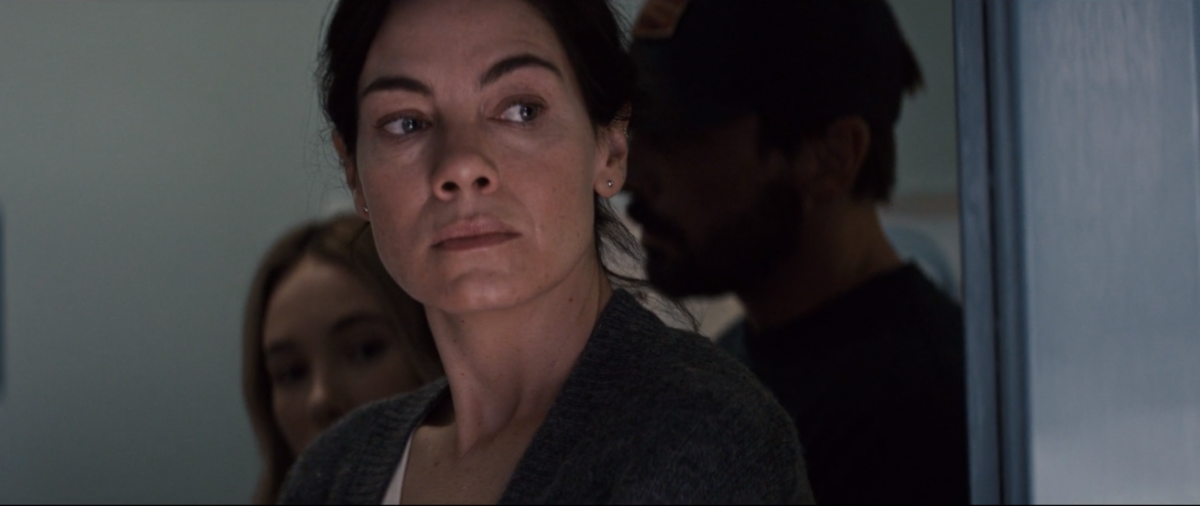
What were your initial conversations with Brad Anderson about the look of the film?
I spoke with Brad and the producers and they wanted to approach the movie more like Poltergeist. Meaning that they wanted the film to start off feeling normal and happy, but as the story progresses, the darker and scarier it becomes. That was something that I used as an anchor point to tell it visually. I love to dissect the whole script and understand the arcs of each character. I felt in this case, that Jess and her son Owen, both have an amazing emotional arc. I was really trying to find a way to express that visually. I always try to find that through camera, light and through lenses. We started the movie with longer lenses and by the end, we ended up using shorter lenses. Brad and I wanted to shoot anamorphic from the start. I wanted lenses that had character where we had flares and bendings, close focus, and I wanted to have more bending towards the end. If you look at the close up toward the end of the movie, or the close-up at the beginning, then it should almost feel like a different movie. Those were the conversations that we had. Brad makes a shot list. He knows what he wants from his camera angles, but at the same time he is very open to input. When it comes to selecting lenses, or the general mood, he gives me all the freedom and lets me do my creative process with it. He does that with all of the heads of departments, so every head of department has a chance to step up and present ideas and he can select what he likes, but everybody is a team player and it’s great to work on those collaborations.
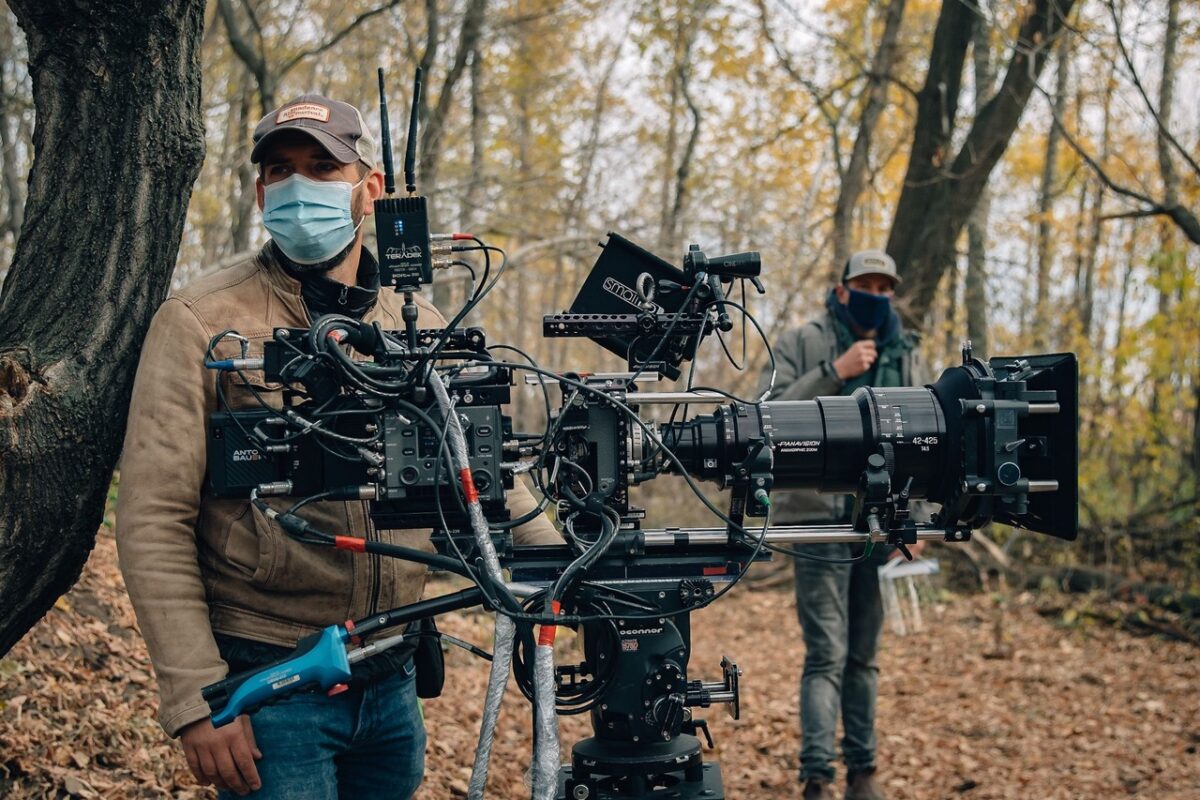
What creative references did you look at? Did you look at any other horror films?
I love making mood boards, usually I make them on my own without input from the director. It’s the way I see the movie, so when I present it to the director it might inspire him, after that I tweak my moodboard to a mix of both our ideas and that is the one I share with the rest of the H.O.D.’s. I looked at stills from Pet Sematary, (Kölsch & Widmyer, 2019), Blade Runner (Scott, 1982) and Gretel and Hansel (Perkins, 2020).
Could you discuss your approach to capturing Owen’s transformation in the film?
After the dog runs away and then comes back, you see that the dog becomes more wild. I wanted to have a visual reference of what happens to the dog as to Owen. I was looking at several ideas and then I remembered Blade Runner and the replicants eye effect. During camera tests, I wanted to have a beam splitter to try it out. Depending on the angle of the lightsource in the mirror the effect changes. Sometimes one eye is bigger than the other one. It’s more subtle in a way, but when Brad saw it, he really loved the idea. He needed it to be a quick set up, however. This was a two-camera show so I told Brad that by the time I know I need to have that set-up, I need to put one camera away and within twelve minutes the rig would be ready. With the 1st AD, we were able to plan those shots up front. We shot everything on the Rialto and we made it very small and compact. We had a very small LED light attached with a very small boom arm, so it became very easy to do that. We had a whole prep system. The issue is that we didn’t have a real beam splitter. They found some half mirrors, they were a warmer in color it was the only one we could get our hands on. We wanted to do slow motion on the dog at night. Having the Rialto, was really a benefit, to be able to go to dual light and push it to 2500.
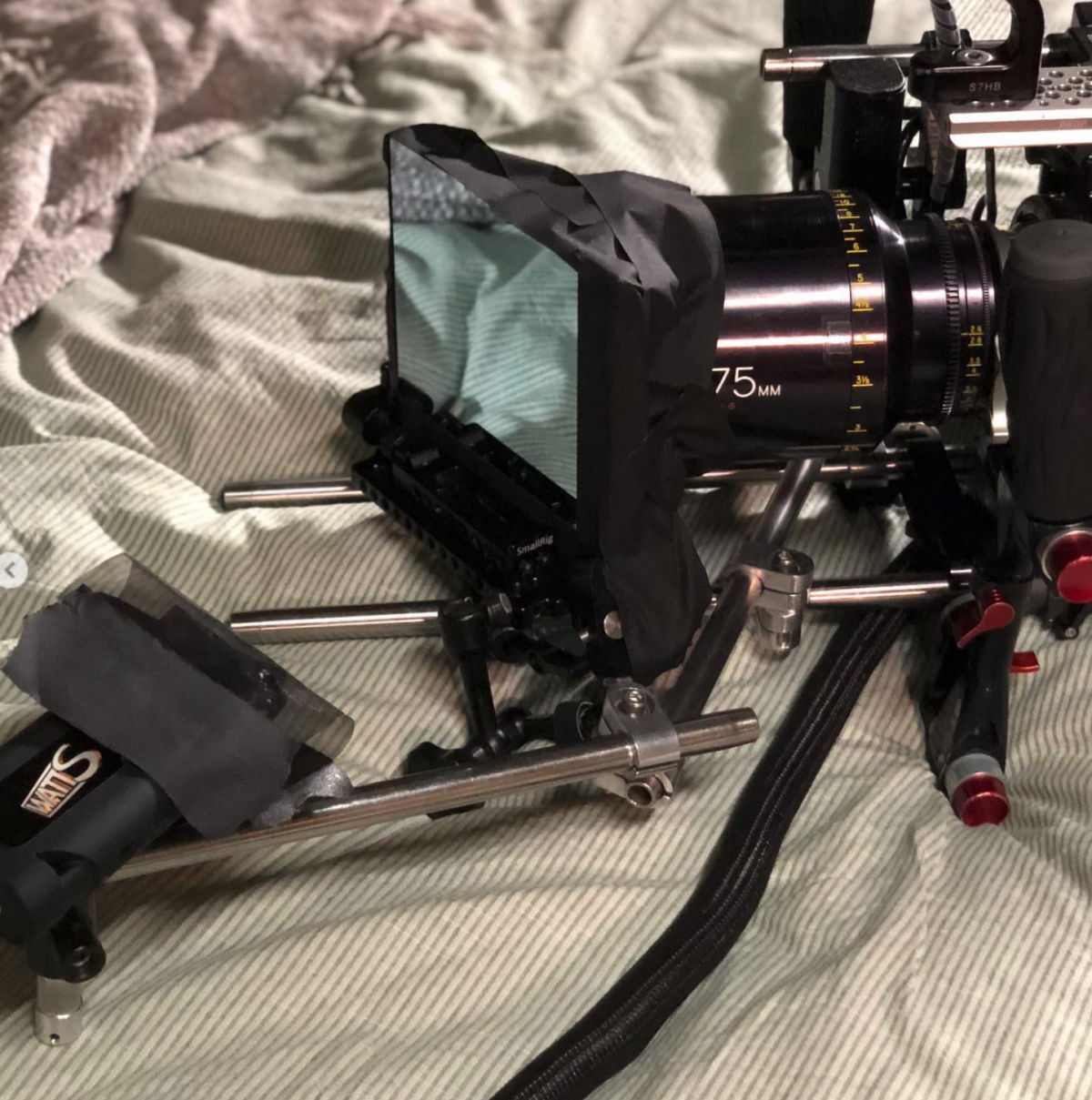
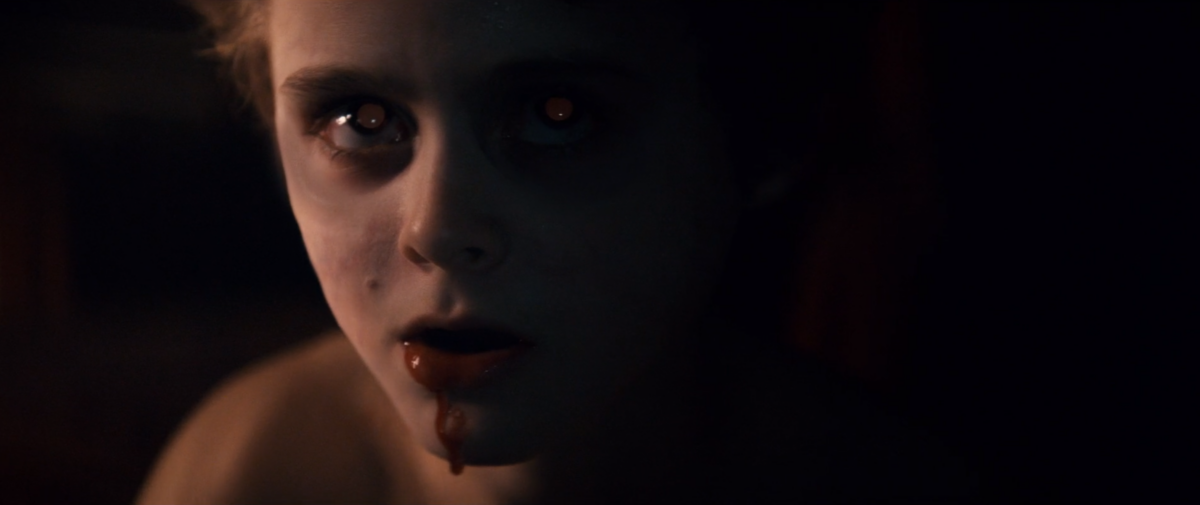
At the start we used 75mm lens with Glimmerglass 1 on all the close-ups and once Jess cuts her vein, we switched to 50mm lens Glimmerglass 1/2. In the final chapter, when Owen is drinking the blood of the woman that tried to escape, Owen’s mouth is full of blood and that is another change for Jess. We decided then to go for 35mm Glimmerglass 1/8 close-ups. So, we have an evolution going from 75mm, to 50mm and ending up with 35mm.
Helen’s death scene is one of the most harrowing scenes in the film. How was this captured?
We established the barbed wire a little bit earlier in the story. We hinted in the beginning, but we forgot about it by the time Helen trips and lands on her neck. It is a really shocking moment and it was done through body doubles. Ellen is played by June B. Wilde and she was amazing. She was a real trooper and a fun collaborator to work with. We had a stunt double doing the fall on the wire and obviously those are fake barbed wires. We had a chest plate which she could lean on and then she just had to push her throat on the fake wire slightly. It was a whole prosthetic that we had to build around the neck, so all of that had to be planned up front, knowing what angles we’d shoot, so that we knew what prosthetic had to be done. This was a union shoot, we had minimal amount of time with kids to shoot. We were running slightly behind schedule and we were shooting frontal on the woman, with her face in the barbed wire and we see Owen appear from the back and you understand what’s about to happen. He starts feeding, then Jess arrives and Owen turns around. Story-wise it’s so important to have this close-up when he turns. I told Jess to put the beam of light straight in his face, so it’s full frontal lit and you can see all of the blood on his face. There was no time to shoot a frontal shot of Owen. I only needed two minutes, but they wouldn’t allow me to go overtime. So, I told Brad don’t yell cut. I jumped over the wire, turned the camera around and shot the boy turning around.
I light scenes through character emotion. Depending of the mood of the scene, the light will be different. I like to light the scene and not the shot. So once my light is done, I almost don’t need to re-light when I change the line. It might be a small eye-light, or small adjustment, but otherwise, I’m giving myself a lot of freedom on camera. Afterwards I can do whatever I want and it gives production a lot of time shooting.
I love playing with colour temperatures. If you look at the house on its own, it is really lit with sunlight and moonlight and then a lot of practicals. It’s always a mix of colour temperatures, but it’s warm light inside the house. Once you go into the basement we use these greener bulb lights, the whole mood of the basement is different from upstairs and again that is lighting through emotion. We used NYX bulbs. I like the green colour as it’s more uncomfortable and creates a more sickening and uninviting mood. If you look at the bathroom upstairs, we had those shades and they were also very warm, so it was always inviting light. At night, the fluorescent above the cabinet is greener, so by the time Jess washes Owen after he drinks the blood, it is a more sickening colour of green and yellow.
We have costume design, art direction, production design, light design, the talents. All of that comes through the same lens. When everything comes nicely together then it’s magical. I’m usually there with wardrobe as well so they don’t give me colours that are going to jar me. It might look nice on the character, but it won’t fit in the space. A costume designer only chooses a silhouette on a white wall, but I’ve seen a location, so you know that the silhouette might look nice as an outfit, but it will jar on the location because there might be too much contrast, or it might be too similar. It’s not my final say to be clear, but that’s why I like the collaborations with all departments to make sure that everything fits. On a movie like Blood, the good thing is that we were all working together and could see that it fits in a frame.
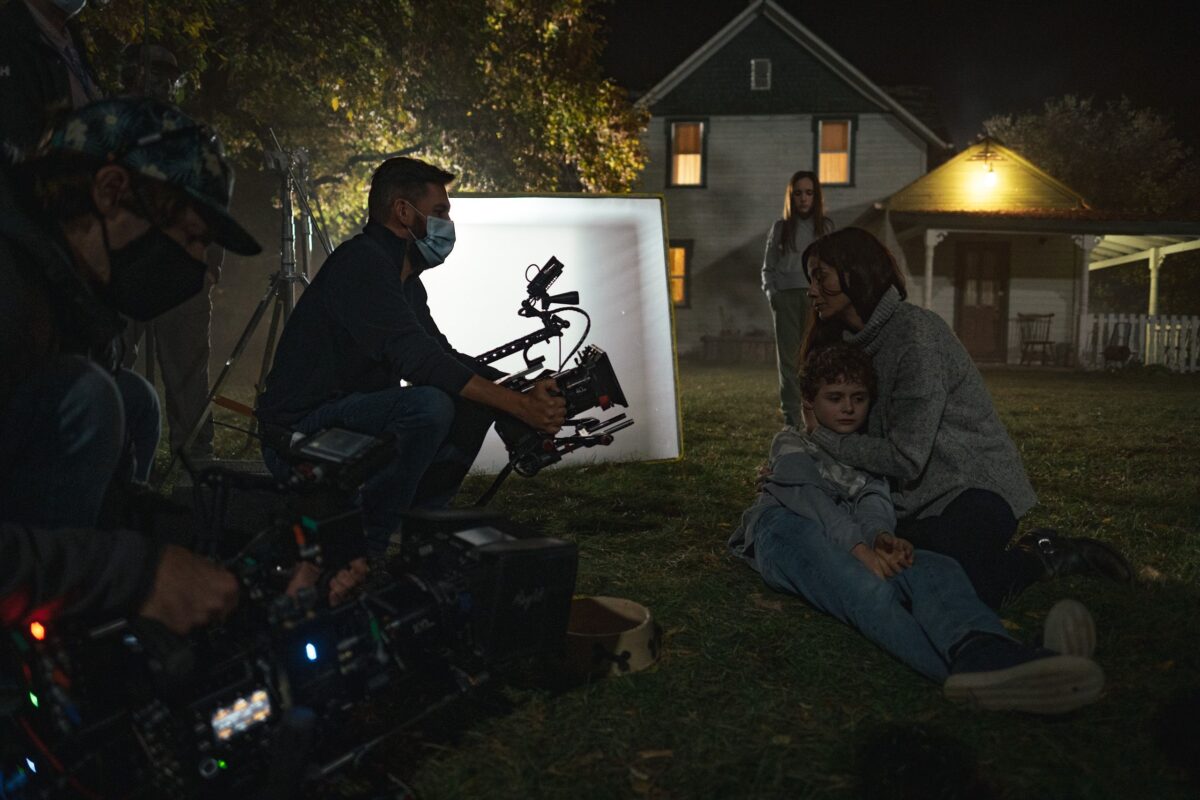

Did you encounter any issues with the locations?
When we arrived there, the whole location was white, so that was the first challenge! Our production designer repainted the whole house. I also don’t like matte painting. I always like it when it’s glossy as I like reflections, so I ask make-up to make it shinier on their faces. So, when I’m shooting low-key the colours will pop more on faces. I think one of the biggest challenges we had on this shoot, is that we shot in 30 days. We had children on set as well. They were allowed 6 hours on set, but only 3 shooting hours and they were educated for 3 hours in the trailers. The kids were amazing, but it’s a challenge production-wise to make sure that we can only shoot in those limited hours, so we had doubles for a wider shot for example. When I was selecting my cameras, I wanted to use Sony Rialto. For my Steadicam operator, I wanted to have a normal Venice, just to be able to swing fast for Steadicam. For my camera, as I operate myself, I wanted to be able to shoot on Rialto. I didn’t want to have a big camera, with a big lens and be up close and frontal on the child, as it might sometimes be really intimidating with a big camera. By having this smaller camera, I was able to be more nimble and less impressive on the child.
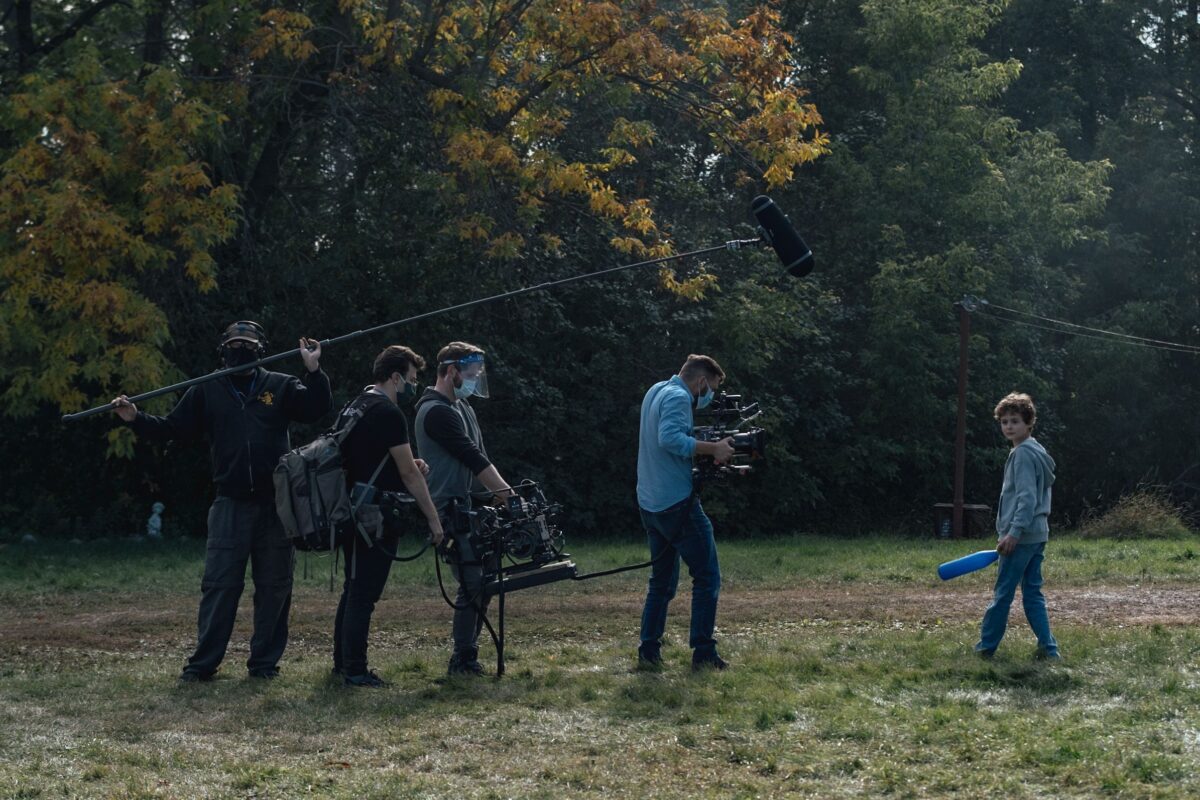
We shot in a real house and the locations were very small. Having the Rialto, in the bathroom for example, we could easily put the camera between the bath and the wall, so it was easy to find those angles. The Rialto gave me a lot of flexibility. At the end of a scene when the two children chase each other towards the tree, the whole run with Rialto was a lot easier and lighter. You can keep rolling and you are not dealing with the weight of the camera. Shooting children and doing low angles on children, you are always very low to the floor and having this light camera really helps with that.
How do you look back at the experience of Blood? What was the experience like working in the horror genre?
I enjoyed every step of it. Working with Michelle Monaghan was such a pleasure. She’s one of the sweetest and kindest people and an unbelievable talent. She is very open, very approachable. Brad Anderson too. It’s a joy to work with people like that because they don’t have egos. I don’t like to work with people who have egos. They are there to do what’s best for the movie. They are not there to do what’s best for them. I have the same principal. We are here to do a job and we select a script because we love it and I want all our attention to be what is best for telling this story. I felt like every crew member was part of that philosophy, so it was so much fun to work on this project. I’m watching more horror films now, to get more used to it. I might shoot a new horror movie this year. What’s great about the horror genre, is that you can do a lot with it. It opens a lot of visual possibilities. You can experiment more and the arcs are bigger sometimes as well. You can be more expressive in light and camera, so I think it is a very fun medium to play with for us cinematographers.
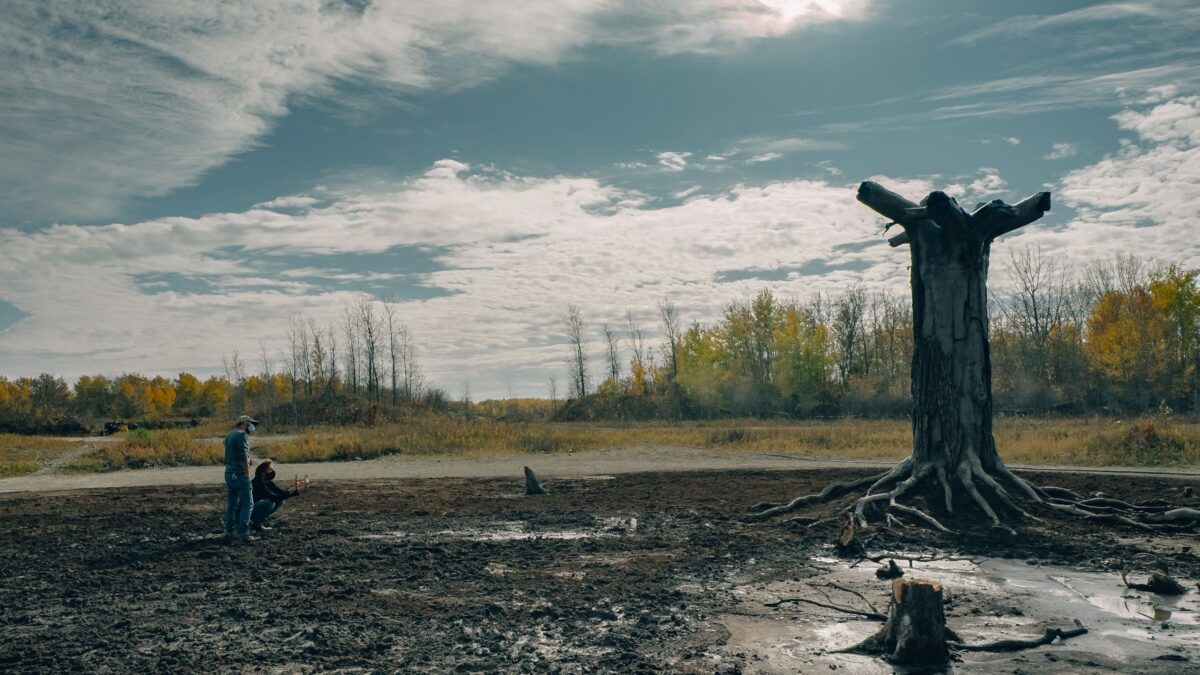
by Oliver Webb
On set photography : Eric Zachanowich
